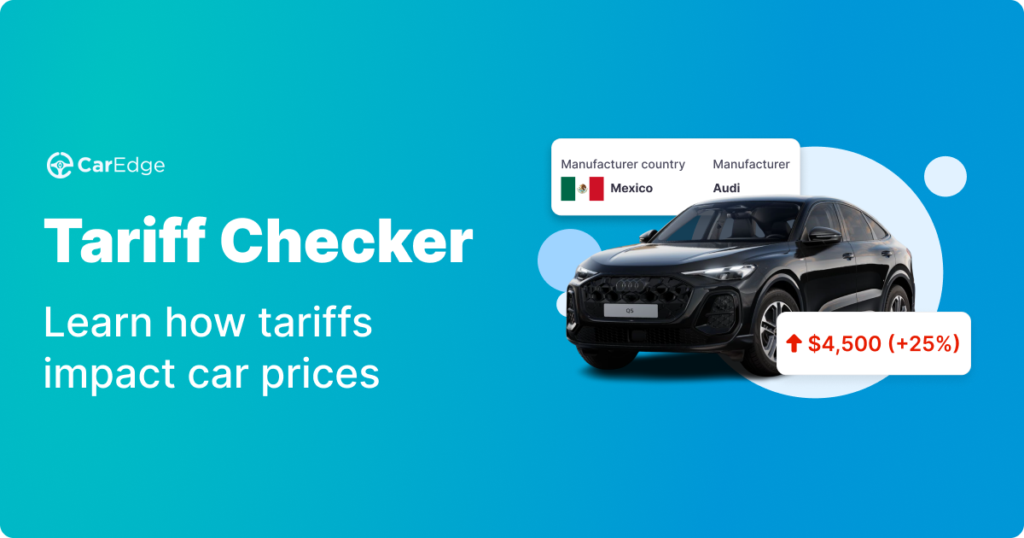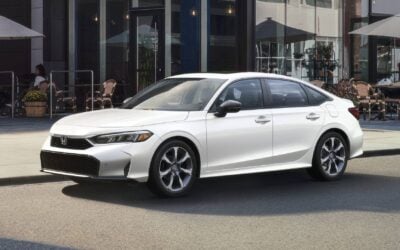President Trump has signed sweeping new auto tariffs for vehicles built outside of the U.S., marking a significant escalation in the administration’s ongoing trade battle. The move could directly impact car prices across the board, including the vehicle you might be shopping for in 2025.
Check if the car you’re considering is impacted by the new tariffs with this free Auto Tariff Calculator.
What We Know So Far
On March 26, President Donald Trump announced a 25% tariff on vehicles manufactured outside the United States, set to begin on April 3, as outlined in a March 26 executive order from the White House. In addition to vehicles, specific auto parts—such as engines, transmissions, and key powertrain and electrical components—will also face the 25% tariff. These tariffs on auto parts will take effect by May 3.
The new tariffs are part of Trump’s broader “reciprocal tariff” strategy, officially set to begin April 2. However, the president signaled earlier this week that auto-specific levies would come sooner — and now it’s happening. Markets reacted swiftly to the news, with auto stocks taking a dive following Bloomberg’s initial report that new tariffs were arriving early.
“We’re going to apply a 25 percent tariff to all cars not built in the United States,” Trump said during a White House press conference. “We’re raising the base rate from 2.5 percent to 25 percent.”
Limited Exceptions
According to the March 26 executive order, there are few exemptions for the new tariffs on imported cars and components. Parts that qualify for duty-free treatment under the United States-Mexico-Canada Agreement (USMCA) will be exempt from the new tariffs—at least until the Commerce Department creates a system to apply the tariffs solely to the non-U.S. portion of those parts. For vehicles from Canada and Mexico that meet USMCA requirements, the tariffs will apply only to the value of their non-U.S. content.
Who Will Be Hit the Hardest by New Auto Tariffs?
These price hikes could significantly reduce car sales in the U.S. and trigger job losses across major auto manufacturing states like Michigan, Ohio, Indiana, Illinois, Missouri, Texas, South Carolina, and Alabama, as well as in Ontario, Canada.
However, the policy also drew praise from the United Auto Workers (UAW) union, which called it a “historic” win for American labor. UAW President Shawn Fain said the tariffs help reverse decades of “harmful” free trade deals that hurt working-class communities. In a statement, the union urged automakers not to pass the added costs on to consumers and expressed support for legislation requiring them to absorb the impact. The UAW also called for federal aid to protect workers from any disruptions caused by reshoring efforts.
With nearly half of all new vehicles sold in the U.S. in 2024 coming from overseas, and $474 billion in automotive imports last year alone, the economic ripple effects could be far-reaching. Key exporters to the U.S. include Mexico, Japan, South Korea, Canada, and Germany.
What It Means for Car Buyers in 2025
Whether you’re eyeing a new Honda, BMW, Hyundai, or even a Jeep or Ford, today’s announcement could raise prices across the board. Even U.S.-assembled cars aren’t immune if they rely on imported parts or manufacturing partnerships abroad. However, some cars will be impacted more severely than others.
The new auto tariffs are expected to sharply increase new car prices, according to the Anderson Economic Group. CEO Patrick L. Anderson told Automotive News that buyers and workers alike could feel the effects within weeks, with vehicle costs projected to rise by $4,000 to $10,000—even for many models considered “American.”
Auto prices are already sky-high in 2025. Industry analysts also expect auto insurance rates to rise due to tariffs in 2025.
President Trump argues the tariffs will strengthen the U.S. auto industry by pushing production stateside. On Monday, he touted Hyundai’s $21 billion U.S. expansion as proof that his approach is working. Still, the global auto market is deeply interconnected, and relocating manufacturing isn’t something that happens overnight.
Automakers — including executives from Ford and Stellantis — have warned the administration that sudden tariffs could stall production, threaten U.S. jobs, and create more uncertainty in an already fragile supply chain.
Stay Informed

Whether you’re planning to buy new, lease, or even wait it out, it’s more important than ever to know how these tariffs could affect the price of the vehicle you’re considering. Even the used car market will see impacts as some new car buyers shift their buying plans.
For car shoppers, it’s time to take a closer look at what’s coming next. Use our free Auto Tariff Calculator to find out if the car you’re shopping for is likely to be hit by these new tariffs.
We’re keeping a close eye on what comes next — and we’ll update you as the situation unfolds. In the meantime, make sure you go into your next car deal with eyes wide open.













0 Comments